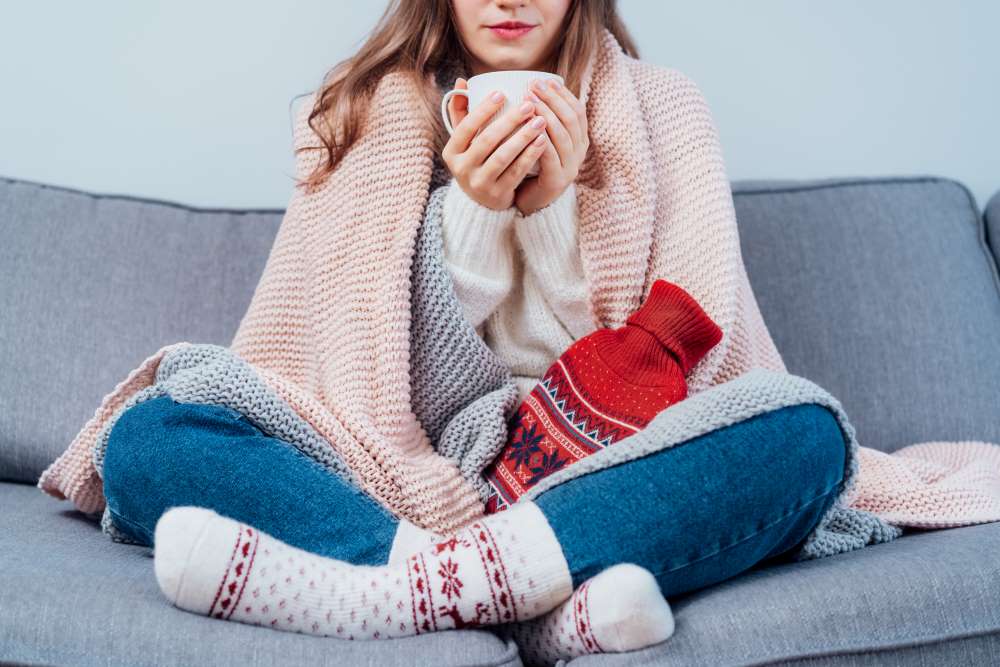
With the ongoing energy and cost of living crises, households across the UK are looking for ways to cut back on their heating bills. In this guide, we’ll look at eight tips to help you save on heating this winter and, as a result, lower your expenses.
Our Top Tips to Reduce Your Heating Bill
Please be advised that you should not sacrifice your health to lower your heating bills. This is one reason among many as to why making efforts to keep the heat in can be a better option than simply lowering the thermostat. Without further ado, let’s look at our eight tips to save on heating this winter.
Prevent Draughts
For starters, it’s important to stop draughts where possible. There are several places where draughts are more likely to occur.
P.S. we’re primarily focusing on low-cost ideas today. After all, most households need inexpensive or free solutions to minimize their bills this winter.
Here are several common places where draughts present themselves:
-
Windows - If you are particularly concerned about your windows, you may want to invest in draught-proofing strips, which can be added to window frames. With that said, if you have sash windows, brush strips are preferable. While there are more expensive long-term solutions (e.g., double- or triple-glazed windows or thick heat-saving curtains).
-
Doors - Keep your internal doors closed to preserve as much heat as possible. Beyond that, consider adding draught-proofing strips to gaps around the edges of your door frame. You might also want to install draught excluders at the bottom of doors.
-
Floorboards/Skirting - If there are any gaps in your skirting or/and floorboards, you could fill them with an appropriate silicone-based filler. It’s important it’s silicone-based so that your floorboards have the ability to move. If in doubt, check in with a professional or knowledgeable employee in a hardware store.
Time Your Heating Right
Obviously, you don’t want to have your heating on when you’re not there. Moreover, even when you are at home, you probably won’t need your heating on when you’re under the covers at night. Whatever the case, you could time your heating to turn on when you get up in the morning or arrive home.
Bleed Your Radiators
Many tasks relating to boilers and radiators are not DIY-friendly. However, bleeding radiators can be an exception. So long as you have the right skills and knowledge, you can bleed your radiators to remove air bubbles (which can be the cause of cold spots) if necessary. Be sure to follow the manufacturer’s instructions. Radiators should be bled twice a year.
At a later point, you may want to have your central heating power flushed, as this can remove sludge from your heating system. However, this would require hiring a Gas Safe Register engineer. But, if at some point you want to hire a heating engineer for this task, it will further improve the energy efficiency of your heating system. This should be done every 5-6 years.
Don’t Heat Every Room If Possible
Some rooms need heating more than others. In addition, some rooms may need heating at a given time while others won’t.
There are a few ways of selecting which rooms to heat. For one, if your property has thermostatic radiator valves, you’ll be able to lower the heating in unused rooms. We do not recommend turning off unused radiators, but you may want to lower them.
Alternatively, if you have a small electric heater in a commonly used room (or a portable one that you can move), you could use this instead of turning on your central heating at certain points. However, we don’t suggest taking this approach all winter since an unused boiler could suffer issues such as frozen pipework.
Watch Out For ‘Energy Vampires’
Surprisingly, an energy vampire doesn’t refer to a Transylvanian resident hooked on energy bars. Rather, energy vampires are appliances and other tech that you’ve left plugged in even when they’re not in use.
So, if you have anything on standby (e.g., a laptop, phone charger, TV, kettle, etc.), you should turn off the power switch associated with the plug on the wall. If you have old-fashioned plugs, you should just plug them out entirely.
Hot Water Cylinder Insulation
If you have a regular/heat-only or system boiler, you may want to purchase a hot water cylinder jacket. These are generally inexpensive and suitable for an easy DIY installation. Hot water cylinder jackets can help your home maintain heat for a longer duration and ultimately lower your bills. Please note that this tip is not applicable to those with combi boilers.
Consider Reducing Your Combi Boiler’s Flow Temperature
A more technical solution to lowering your heating bills revolved around flow temperature for a condensing combi boiler. In general, a combi boiler’s flow temperature usually only needs to be at its highest when it’s especially cold.
Please see your manufacturer’s guidance on how to reduce your boiler’s flow temperature and by what amount. Also, you should be aware that how low you should reduce a flow temperature can depend on the age and health of those living in the household. If in doubt, consult a heating engineer, as the manufacturer’s instructions may or may not take age/health into account.
Lower Your Thermostat
Lastly, if you would like to reduce your thermostat, you should only do so within safe limits. Reducing your thermostat by 1°C could save you about £75 per year. Of course, for the winter period alone, this isn’t going to equate to much of a saving, so if lowering your temperature is noticeably less comfortable, it may not be worth it, especially when there are so many ways of keeping the heat in.
But if you would like to lower your thermostat, you might want to know what the recommended safe temperatures are for a thermostat. According to the World Health Organisation (WHO), a suitable thermostat temperature for healthy and well-dressed people is 18°C. For most babies* and infants, the elderly, and unwell individuals, it is 20°C.
*There room of a newborn baby should have a temperature of 16-20°C. Getting this temperature correct is critical for the health of a newborn. This is due to the danger of sudden infant death syndrome or SIDs, which becomes more likely if a newborn becomes too hot.



























